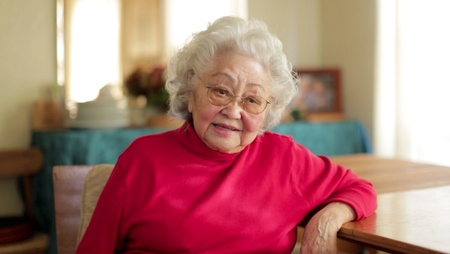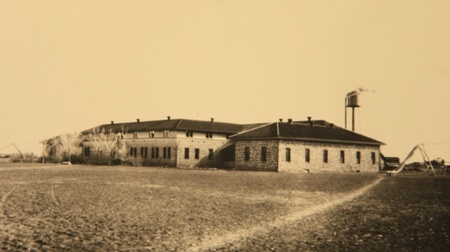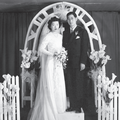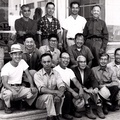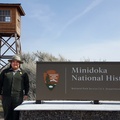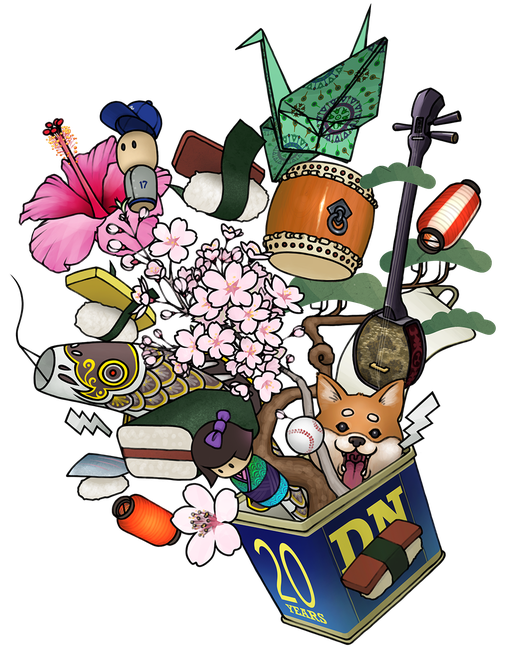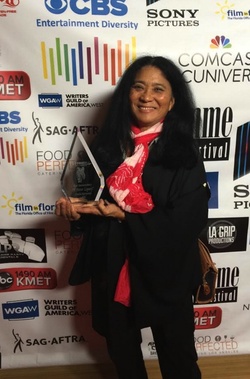
But for her latest project, A Bitter Legacy, she took on the role of director and producer and delved into the history of her own family and community. It deals with the wartime incarceration of Japanese Americans, with a focus on the citizen isolation centers, which are little known even to those familiar with the camps.
These centers — Moab in southeastern Utah and Leupp in northeastern Arizona — were set up in 1943 to isolate Nisei and Kibei designated as “troublemakers” in the War Relocation Authority camps. The inmates ended up at Tule Lake in California’s Modoc County, which had been transformed into a segregation center.
Katayanagi visited Moab, a former Civilian Conservation Corps camp; Leupp, part of a former Navajo boarding school, which opened after Moab became overcrowded and had four guards for every prisoner; and Camp Tulelake, located about 16 miles north of the Tule Lake Segregation Center.
Interviewees include Taneyuki Dan Harada, a Leupp “troublemaker” who was held in the stockade at Tule Lake and renounced his U.S. citizenship; Jimi Yamaichi, a Tule Lake draft resister; and brothers Jim and Mori Tanimoto, part of a group of Tule Lake incarcerees who were arrested for refusing to register for the controversial loyalty questionnaire that was circulated in the camps. Mori passed away in 2015 at age 95.
Katayanagi spoke with community leaders and artists, some of whom were incarcerated: Wendy Maruyama, creator of The Tag Project; painter Chizuko Judy Sugita De Queiroz (Poston); musician and writer Toru Saito (Topaz); former Secretary of Transportation Norman Mineta (Heart Mountain); Rosalyn Tonai of the National Japanese American Historical Society; former JACL Executive Director Priscilla Ouchida; and Karen Korematsu, daughter of Supreme Court case plaintiff Fred Korematsu.
The Bay Area resident won the best documentary award twice in Southern California last year — in June at the Women’s Independent Film Festival in Santa Monica and in October at the LA Femme Film Festival in Beverly Hills. A free screening is set for Monday, Jan. 30, at 12 p.m. at Smith Rafael Film Center, 1118 Fourth St., San Rafael (Marin County).
Family Connections
Katayanagi recalled that as a kid she did not learn about the community’s bitter legacy from her parents: “I realize now that my parents didn’t talk about their experience in the concentration camps for several reasons. I think first, that that was their way of protecting their six children at the time, now seven, from this very painful episode in their life. It must have been so hard, first to process the whole shameful treatment by the U.S. government for their own lives, and secondly it was simply too difficult to explain all the concepts behind these policies to their young children.
“Later, I think social amnesia comes into play. People want to forget about these searing, painful experiences of loss, and shame and powerlessness.
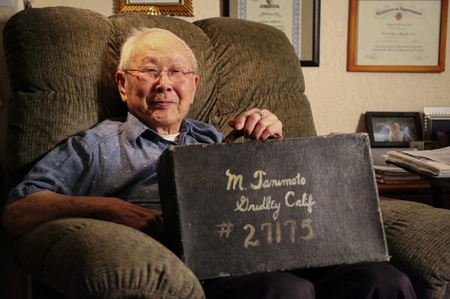
“It was really my grandparents who lost so much because of the incarceration. Before World War II, both of my parents came from very wealthy families. Their families, like many immigrant families from so many nations, had worked very hard for many years to create their full, enriched lives, allowing their children the educational opportunities denied to them for years.
“My grandparents lost their businesses, their status in society to a large degree, and the means to make a living in a manner that they could before the war. My father had earned a full scholarship to the University of San Francisco, but of course lost that entirely after 1942.
“I can’t imagine what it would be like for me and my siblings to lose our houses, our belongings, our positions in the workplace, in society at large, and then to try to return to a hostile environment with our hands symbolically bound behind our backs and to try to make our lives whole again. I know I would feel so angry and bitter.”
When the topic did come up, it led to angry exchanges with uncles and aunts, Katayanagi said. “When asked why they didn’t protest this policy, they would say times were different then. Many felt that they could not talk openly about this denial of their civil rights without penalty. Fear of reprisals was real. The need to keep families together was paramount.”
For the film, Katayanagi visited all of the sites where her immediate family members were incarcerated. “None of my grandparents were alive at the time. My father had passed away years before and my mother, in her eighties at the time, had no interest in taking a trip to Topaz or Tule Lake. My mother is interviewed in my film and has seen it in a shortened version in San Francisco at last year’s Films of Remembrance. I hope she will come to the Bay Area screening on Jan. 30 … to see the final version.”
Although a generation removed from the camps, Katayanagi remembers being reminded by schoolmates every Dec. 7 that the Japanese had bombed Pearl Harbor, as though she had something to do with it. “I told my schoolmates that I wasn’t alive then, nor was any person of Japanese heritage in this country ever found to be guilty of espionage. Even so, this cultural shame haunted me for many years …
“Going to Japan twice to work as a filmmaker and then getting a chance to stay and really appreciate the art and beauty and the way of life in present-day Japan affected me so deeply, and I think those experiences totally reversed my feelings about my Japanese heritage on so many fundamental levels.”
Doing the Research
When she decided to make her documentary, Katayanagi was aware that other filmmakers had tackled the topic from various angles. “Part of me wanted to see every film made on the subject and part of me didn’t. However, as I read more and more and learned how little I did know about this period of history, I simply became intrigued about these citizen isolation centers, Moab and Leupp, Cow Creek in Death Valley, and then Tule Lake. Why didn’t we know more about these camps?
“Once I got up the courage to contact Professors Tetsuden Kashima (University of Washington) and Arthur Hansen (CSU Fullerton), they so encouraged me to go in this direction. Professor Kashima’s book Judgment Without Trial: Japanese American Imprisonment During World War II provides so much detail and insight, not just upon the incarceration issues, but the attention given to these citizen isolation centers is eye-opening to anyone reading about this for the first time.
“Professor Hansen’s book Manzanar Martyr: An Interview with Harry Y. Ueno adds a very personal story to this history, as Mr. Ueno, a Los Angeles Japanese American who plays a very important role in this citizen isolation story, is followed from L.A. to Manzanar to Moab, Leupp, Tule Lake Segregation Center, and then finally back to the San Francisco Bay Area.”
Ueno, who died in 2004 at age 97, led the Mess Hall Workers Union at Manzanar and was arrested for his alleged role in the beating of JACL leader Fred Tayama. In a December 1942 incident known as the Manzanar Riot, military police fired on a group protesting the jailing of Ueno, killing two.
Katayanagi also interviewed scholar/authors Roger Daniels (University of Cincinnati, Prisoners Without Trial: Japanese Americans in World War II), Eric Muller (University of North Carolina School of Law, American Inquisition: The Hunt for Japanese American Disloyalty in World War II), Eileen Tamura (University of Hawaii, In Defense of Justice: Joseph Kurihara and the Japanese American Struggle for Equality), and Greg Robinson (Université du Québec À Montréal, By Order of the President: FDR and the Internment of Japanese Americans).
In addition, the film features Daniel Martinez, chief historian for the National Park Service’s WWII Valor in the Pacific National Monument, which includes Tule Lake; and attorney Wayne Merrill Collins, who has continued the work of his late father, Wayne Mortimer Collins, who represented Japanese American plaintiffs in several civil rights cases.
“I feel so honored that they allowed me to interview them for my film,” Katayanagi said. “They are among the most knowledgeable and renowned historians in the field, the very respected leaders in the Nikkei community, and current artists who have created very moving pieces about this history.”
In her travels around the country, Katayanagi has found that most people “have never heard of or know very little about these citizen isolation centers or of the draft resisters, the renunciants and those deemed ‘troublemakers’ by the government. I think because of the egregious and harsh treatment of these American men, the American government is embarrassed to even mention them. The document written by the then solicitor general to the War Relocation Authority saying that he is upset by the Gestapo-like methods used to gather and transport these men to Moab and then Leupp is shown …
“Tule Lake Segregation Center has photographs of military police beating Nikkei men with big wooden batons. Frank Abe’s film, ‘Conscience and the Constitution,’ does an excellent job of showing the stories of those who resisted the draft. I think people will appreciate his film even more given the context of the creation of these citizen isolation centers.”
Describing the centers as a “precursor to Guantanamo,” Katayanagi said the subject is unexpectedly timely. “When I started this film more than five years ago, I had no idea how relevant these issues of racial profiling, immigration restriction, cultural and religious incarceration would be today. When seen with the perspective of over 100 years since people came from Japan to this country, and the forces at work to use misinformed fears and racial animosities against these people, I would hope that maybe just a few minds might be opened to see what a mistake it would be to allow these same policies to occur today to other immigrant groups.
“When I see Nikkei communities standing up, marching or demonstrating their support for Muslim, Hispanic and black American citizens today, it makes me so proud.”
She is also proud of the awards her film has received. “It is such an honor to be recognized for your hard work and effort to create any work of art, especially within the film community itself. My hope is that as many people as possible will be able to see my film and appreciate the stories it tells and open their minds and hearts to all people.”
For more information on the film, including upcoming screenings, or to contact the filmmaker, visit www.abitterlegacy.com.
*This article was originally published in The Rafu Shimpo on January 8, 2017.
© 2017 The Rafu Shimpo / J.K. Yamamoto


